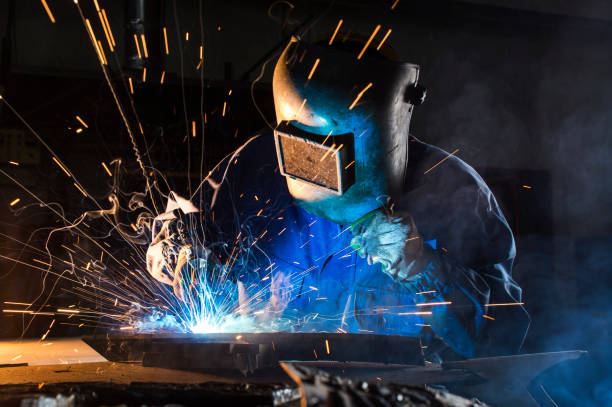With numerous services, Raysun provides welding assistance and honing Dubai process. During MIG soldering, a constantly-fed electrode line and protecting gas spread into the welding site through a hand-held MIG arsonist. With TIG welding, the arsonist carries an electrode, and protecting gas is provided over this via a collection line. At the exact moment, a hand-held fill bar is provided manually into the weld reservoir while the electric current is assorted with a torch-mounted authority or a paw pedal.
Is MIG Or TIG Welding Better?
It all relies on what ‘more useful’ signifies to you and your welding task. Since the preface to the US aerospace enterprise in the 1940s, what we now understand as MIG and TIG welding has developed as staples of trainee and experienced welding worldwide.
MIG soldering is widely acknowledged as being simpler and more manageable to understand and conquer than TIG welding. Because of its constant spread, the MIG procedure is quicker than TIG. What’s more, as MIG’s fill suggests you don’t need to warm the workpiece all the course around to create the weld, it’s arguably more useful for thicker materials, comprising heavy structural components.
Better Control And Accuracy
Analogize this to TIG welding’s greater authority, accuracy, and neatness, relevance to welding in various places, and the minimal necessity for devouring. Then there’s its usefulness for a very wide spectrum of metals, containing exotics, and for soldering thinner-gauge materials.
Question a specialist who has utilized both methods, and we would wager they will convey TIG welding is the ‘more useful’ approach – heeded soon afterward by the capability that it all hinges on the assignment, the consistency of the workpiece, and the moment obtainable. Our welders are fluent in both the welding procedures and hence understand the distinction better. It does not mean that MIG welding is not useful though.
Why Is A TIG Welder Used?
In representations of textiles, TIG welders are excellent with steel, Al, Cu, and Ti to quote just a few. In terms of usage, TIG’s field is vast: motorsport; aerospace engineering Dubai; industrial simulation; display line design; receptacles; industrial facilities; and much more – especially where very thin metal is utilized.
Is TIG firmer Than MIG?
To present a conclusive response here, going in one form or another, is challenging. You see, it all relies on variables containing the soldering job, materials employed, the welder’s aptitude, grade of set-up, whether tensile potency or malleability is most significant, and the methodology utilized for that particular task.
It’s likely correct to state that TIG welding is intrinsically stronger. And that it will provide stronger welds in the pointers of a qualified proficient. Now allow this by factoring in the more significant aptitude level needed for good TIG soldering.
MIG is better for rookies.
For starters, there is MIG soldering’s comparative plainness, the comfort of understanding if you’re just beginning welding, and appropriateness for textiles such as Al, mild and stainless steel. As cited before, it’s way quicker than TIG soldering. And if the stacked coin TIG finesse is not a preference – or you’re satisfied with tons of physical finishing – it is a very satisfactory welding procedure for multiple applications.
Given that MIG welding, Dubai utilizes a constantly fed filler wire, it’s even appropriate for welding relatively light to wider metals. At Raysun, we provide both kinds of welding with proficient service.


